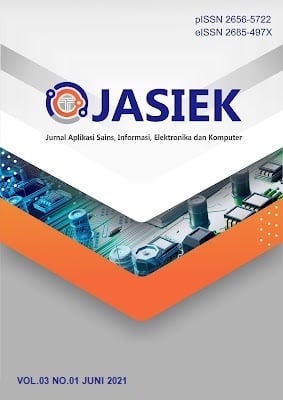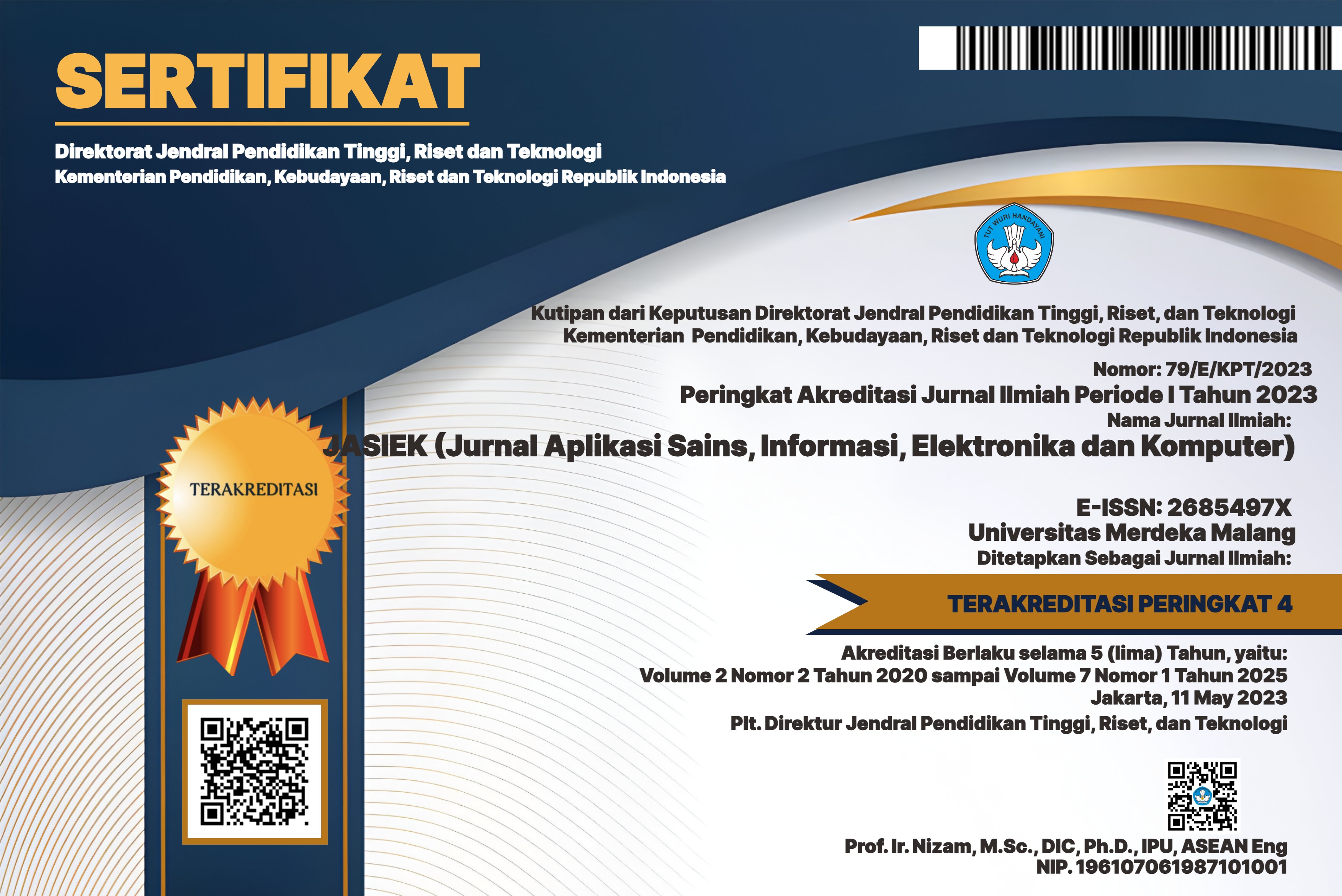Analisis Kesiapan Penerapan E-learning di Sekolah Dasar Menggunakan E-learning Readiness Model: Studi kasus Madrasah Islamiyah Darwata Karangasem
DOI:
https://doi.org/10.26905/jasiek.v3i1.5969Keywords:
E-learning Readiness, Covid-19 pandemic, Distance learningAbstract
In 2020, the world was shocked by the covid-19 virus, which has spread to all countries of the world, including Indonesia. In education, almost all schools in Indonesia have been forced to close by the government and replaced with distance learning. However, in many schools there are obstacles such as the inability of teachers and students to use technology. One of the problems in Islamiya Darwata Karangasem Madrasah. The purpose of this study was to determine the relationship between environmental, teacher, technology and student readiness and provide recommendations for schools to be more prepared to implement distance learning. The method used in this study is a descriptive analysis with an e-readiness model. The sample in this study consisted of 52 students and 9 teachers. The results showed that an overall ELR score of 3.62288 was included in the readiness category, but needed some improvement. The teacher had a score of 3.79167, which was classified as readiness, but needed some improvement. , which was included in 64814, is categorized as finished but needs work, and the technology is rated 3.48148, which means it's ready but needs a little improvement. By improving school internet speeds, evaluating student learning, providing new policies, changing individual perspectives, and increasing budgets.Downloads
References
Y. ARIKA, “Libur Sekolah Terjadi di 74 Negara,†16 maret 2020, 2020. https://kompas.id/baca/humaniora/dikbud/2020/03/16/libur-sekolah-terjadi-di-74-negara/?_t=nZu3z03YTrdDXtkGQsSySmqS4mwScl7Kz36lkcvVoLO4fjQB2SDiAh9U# (accessed Jun. 13, 2020).
P. RICKY, “Virus corona: Sekolah, universitas meniadakan kelas,†17 march, 2020. https://www.bbc.com/indonesia/indonesia-51769074(accessed Jun. 13, 2020).
A. Pininta, “Bila Belajar di Rumah Diperpanjang, Nadiem: Tak Harus Online dan Akademis,†2020. https://www.kompas.com/edu/read/2020/03/25/154226271/bila-belajar-di-rumah-diperpanjang-nadiem-tak-harus-online-dan-akademis?page=all (accessed Jun. 21, 2020).
O. S. Hardi and K. Rumantir, “KETERAMPILAN MENGOBSERVASI SISWA SEKOLAH DASAR DALAM PEMBELAJARAN IPS,†pp. 77–83, 2011.
Kumparan, “Dampak Corona, Sekolah Pelosok di Dompu, NTB, Keluhkan Kesulitan Belajar Online,†2020. https://kumparan.com/infodompu/dampak-corona-sekolah-pelosok-di-dompu-ntb-keluhkan-kesulitan-belajar-online-1t7nV2MKVbT (accessed Jun. 21, 2020).
S. Al Fajri, “Pengukuran Tingkat Kesiapan Penerapan E-Learning DiSMK N 1 BANYUMAS,†Skripsi, 2018.
S. Telles, S. K. Reddy, and H. R. Nagendra, Research Methods for Business_ A Skill Building Approach, vol. 53, no. 9. 2019.
A. Purwanto et al., “Studi Eksploratif Dampak Pandemi COVID-19 Terhadap Proses Pembelajaran Online di Sekolah Dasar,†EduPsyCouns J. Educ. Psychol. Couns., vol. 2, no. 1, pp. 1–12, 2020.
F. Rohmah, “ANALISIS KESIAPAN SEKOLAH TERHADAP PENERAPAN PEMBELAJARAN ONLINE (E-LEARNING) DI SMA NEGERI 1 KUTOWINANGUN,†Skripsi, vol. 6, p. 117, 2016.
LILI DARLIAH, “PENGARUH KUALITAS INFORMASI DAN PENGGUNAAN E-LEARNING TERHADAP PRESTASI BELAJAR DENGAN MOTIVASI BELAJAR SEBAGAI VARIABEL INTERVENING,†Skripsi, p. 176, 2016.
W. Aji, F. Dewi, U. Kristen, and S. Wacana, “Dampak Covid-19 Terhadap Implementasi Pembelajaran Daring Di Sekolah Dasar,†Edukatif J. Ilmu Pendidik., vol. 2, no. 1, pp. 55–61, 2020.
T. So and P. M. C. Swatman, “e-Learning readiness of Hong Kong teachers,†Hong Kong IT Educ. Conf., no. February, pp. 6–8, 2006.
C. H. Aydin and D. Tasci, “Measuring readiness for e-learning: Reflections from an emerging country,†Educ. Technol. Soc., vol. 8, no. 4, pp. 244–257, 2005.
Downloads
Additional Files
Published
Issue
Section
License
Authors who publish with this journal agree to the following terms:
The journal allow the authors to hold the copyright without restrictions and allow the authors to retain publishing rights without restrictions.
Authors retain copyright and grant the journal right of first publication with the work simultaneously licensed under a Creative Commons Attribution-ShareAlike 4.0 International License that allows others to share the work with an acknowledgement of the work's authorship and initial publication in this journal.
Authors are able to enter into separate, additional contractual arrangements for the non-exclusive distribution of the journal's published version of the work (e.g., post it to an institutional repository or publish it in a book), with an acknowledgement of its initial publication in this journal.
Authors are permitted and encouraged to post their work online (e.g., in institutional repositories or on their website) prior to and during the submission process, as it can lead to productive exchanges, as well as earlier and greater citation of published work (See The Effect of Open Access).

This work is licensed under a Creative Commons Attribution-ShareAlike 4.0 International License.











